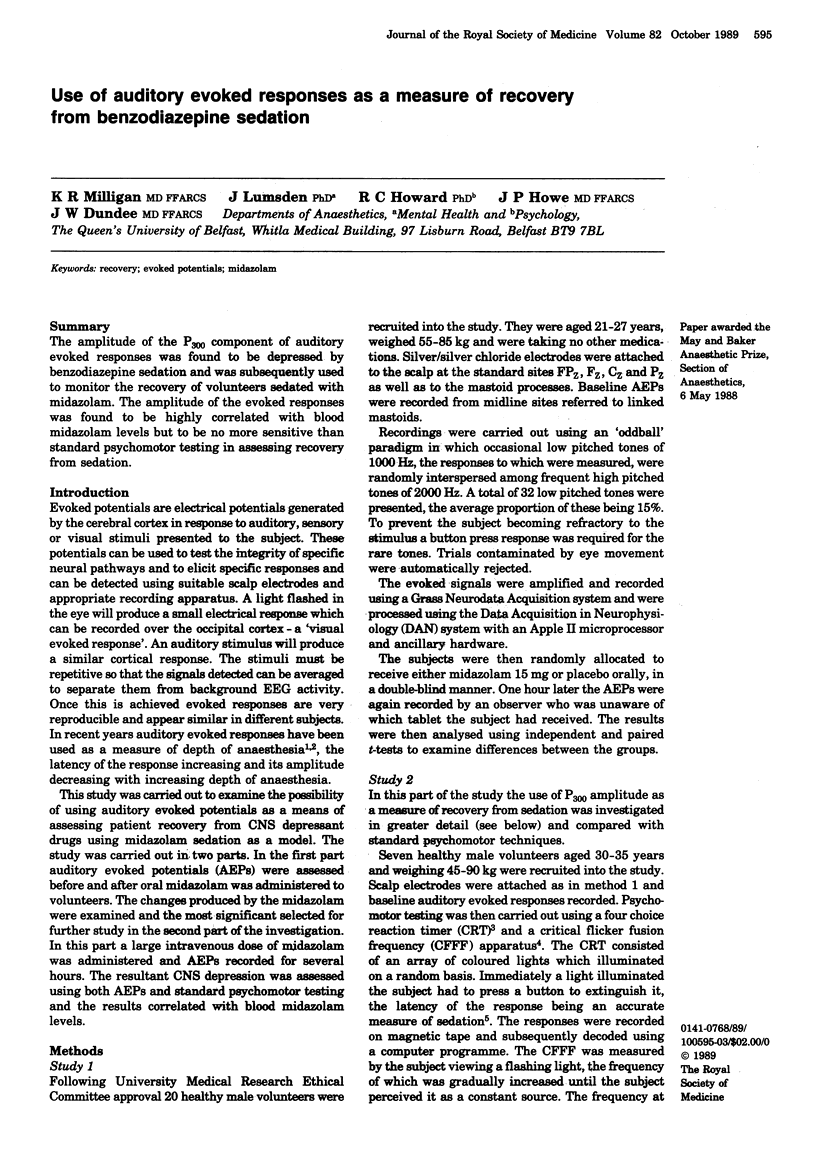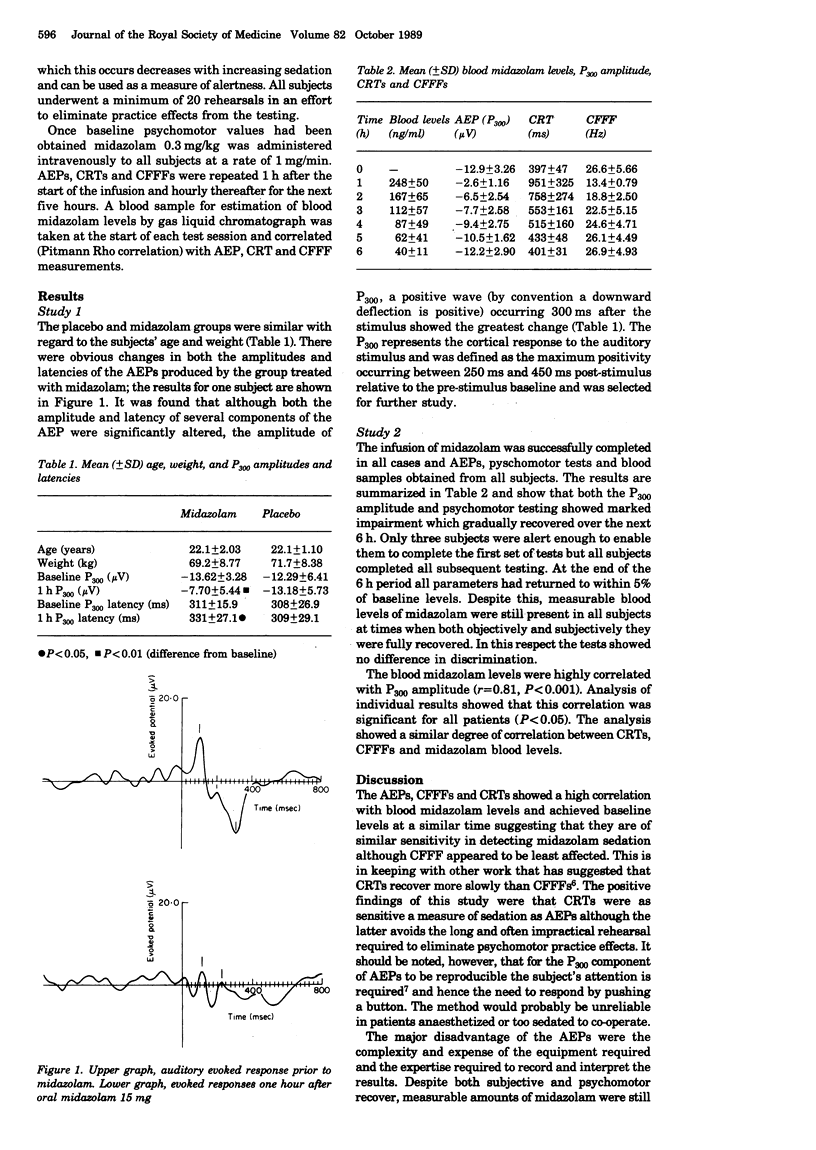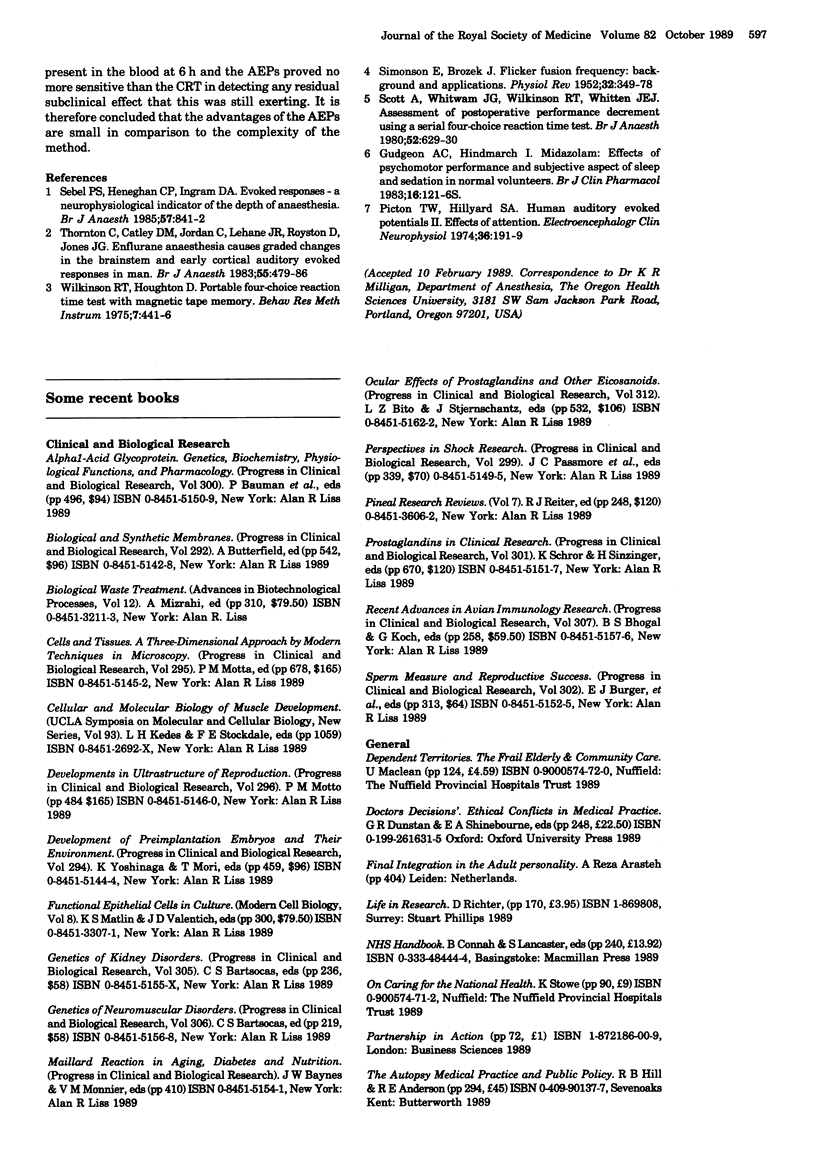Abstract
The amplitude of the P300 component of auditory evoked responses was found to be depressed by benzodiazepine sedation and was subsequently used to monitor the recovery of volunteers sedated with midazolam. The amplitude of the evoked responses was found to be highly correlated with blood midazolam levels but to be no more sensitive than standard psychomotor testing in assessing recovery from sedation.
Full text
PDF


Selected References
These references are in PubMed. This may not be the complete list of references from this article.
- Hedner T., Persson B., Berglund G. Ketanserin, a novel 5-hydroxytryptamine antagonist: monotherapy in essential hypertension. Br J Clin Pharmacol. 1983 Aug;16(2):121–125. doi: 10.1111/j.1365-2125.1983.tb04974.x. [DOI] [PMC free article] [PubMed] [Google Scholar]
- Picton T. W., Hillyard S. A. Human auditory evoked potentials. II. Effects of attention. Electroencephalogr Clin Neurophysiol. 1974 Feb;36(2):191–199. doi: 10.1016/0013-4694(74)90156-4. [DOI] [PubMed] [Google Scholar]
- SIMONSON E., BROZEK J. Flicker fusion frequency; background and applications. Physiol Rev. 1952 Jul;32(3):349–378. doi: 10.1152/physrev.1952.32.3.349. [DOI] [PubMed] [Google Scholar]
- Sebel P. S., Heneghan C. P., Ingram D. A. Evoked responses--a neurophysiological indicator of depth of anaesthesia? Br J Anaesth. 1985 Sep;57(9):841–842. doi: 10.1093/bja/57.9.841. [DOI] [PubMed] [Google Scholar]
- Thornton C., Catley D. M., Jordan C., Lehane J. R., Royston D., Jones J. G. Enflurane anaesthesia causes graded changes in the brainstem and early cortical auditory evoked response in man. Br J Anaesth. 1983 Jun;55(6):479–486. doi: 10.1093/bja/55.6.479. [DOI] [PubMed] [Google Scholar]


